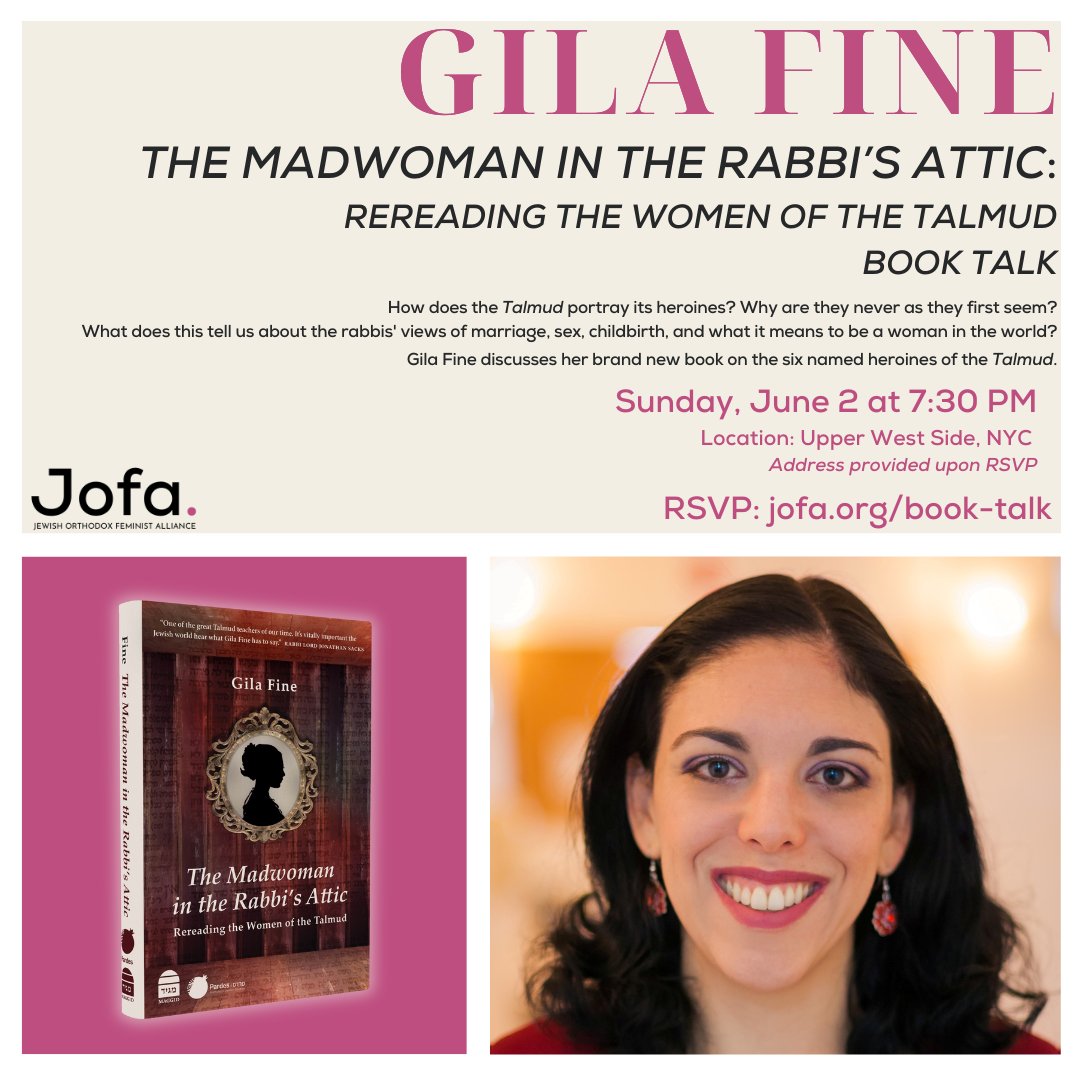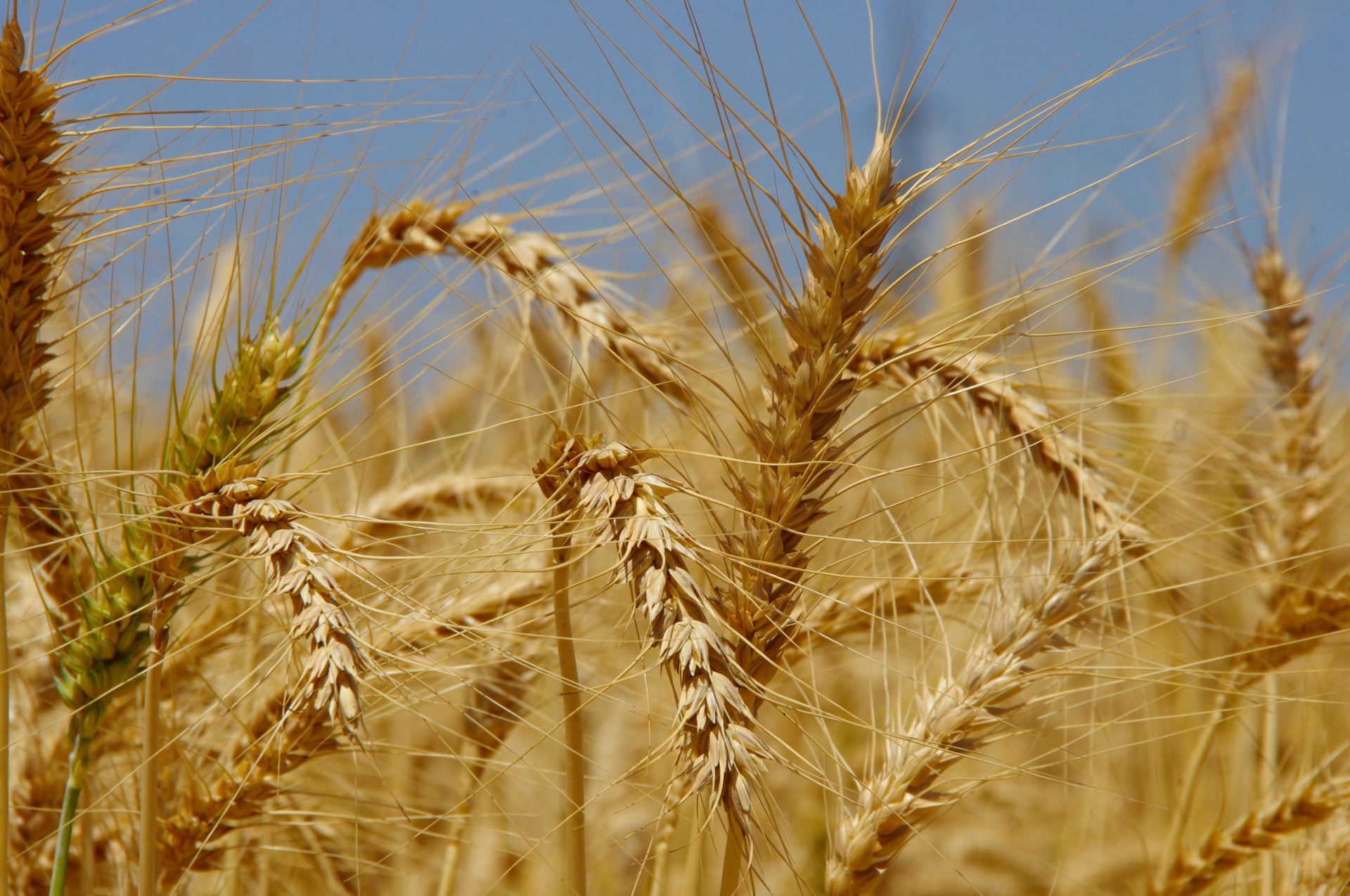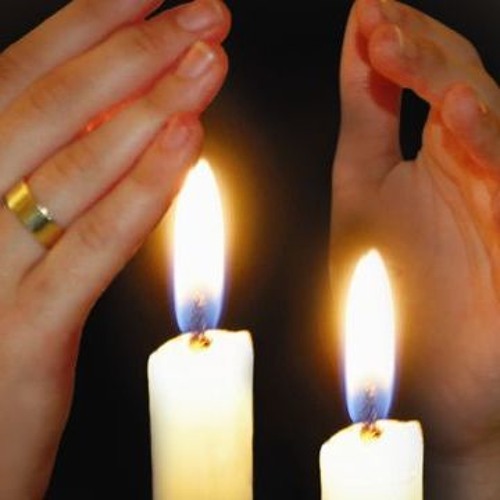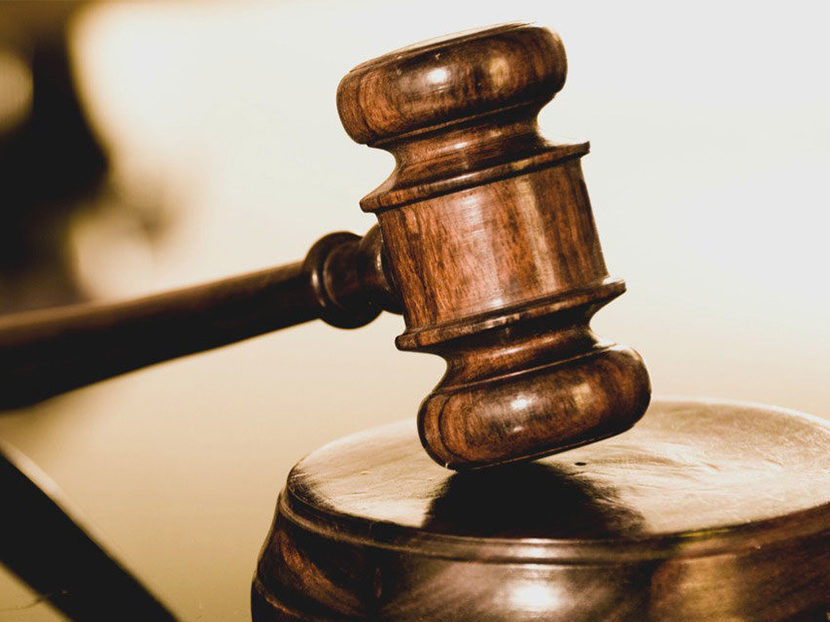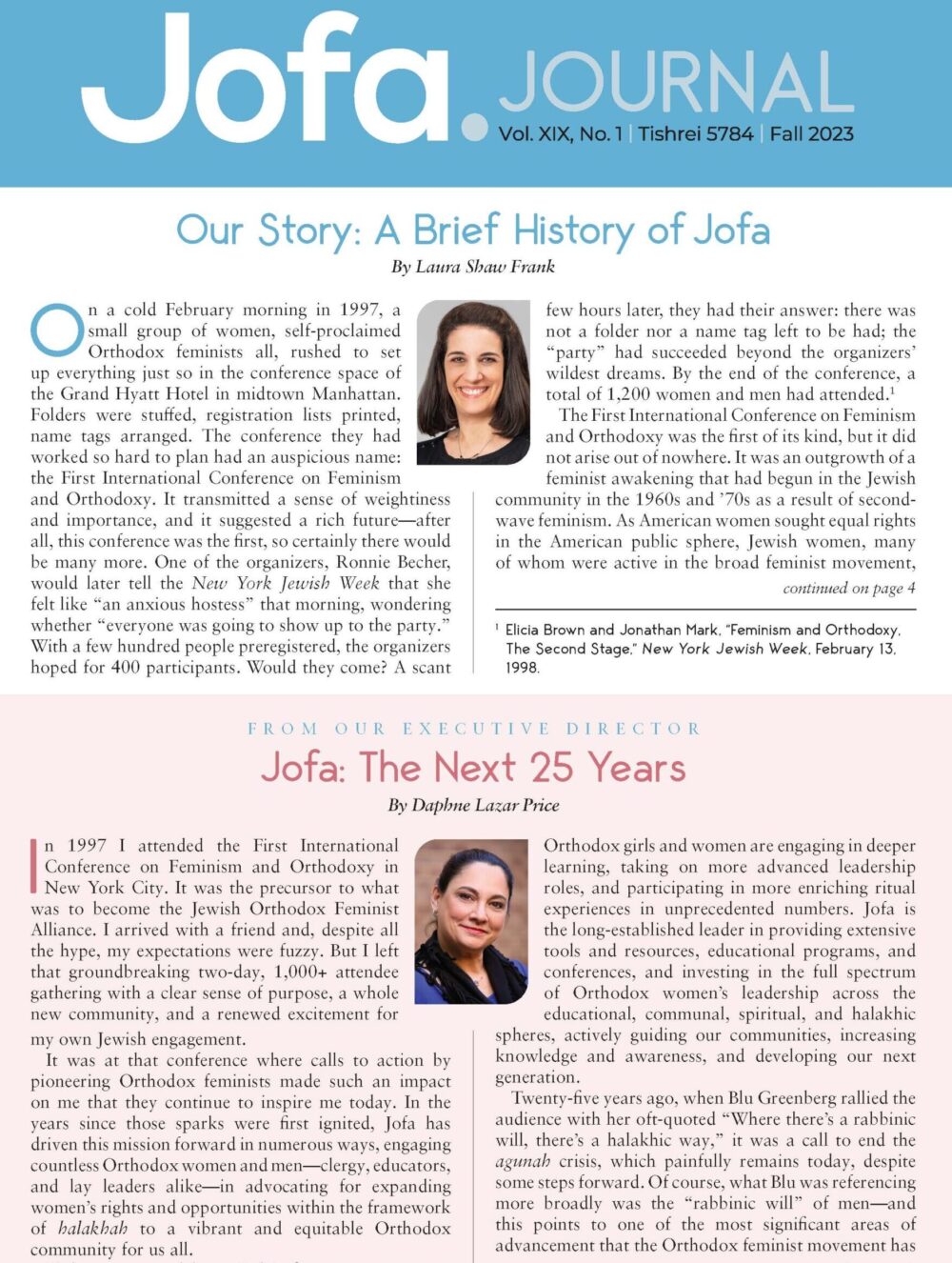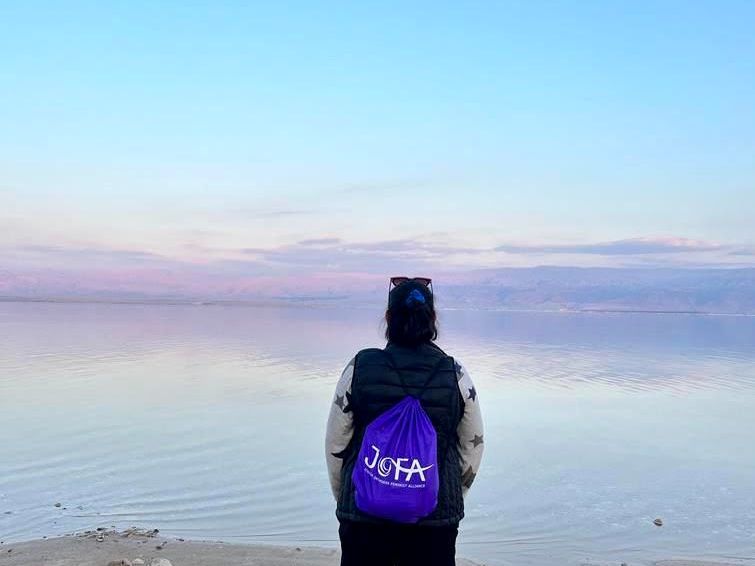Weekly Torah: Internalizing the Exodus
By Wendy Lefko Messeloff
Claim your seat at the table. Join the Jofa newsletter at the bottom of this page to receive weekly updates directly to your inbox.
This two-sided coin is emblematic of the numerous dichotomies in the Pesach story. For starters: There is the well-known statement in Talmud Pesachim, 116b:3:
בְּכׇל דּוֹר וָדוֹר חַיָּיב אָדָם לִרְאוֹת אֶת עַצְמוֹ כְּאִילּוּ הוּא יָצָא מִמִּצְרַיִם, שֶׁנֶּאֱמַר: ״וְהִגַּדְתָּ לְבִנְךָ בַּיּוֹם הַהוּא לֵאמֹר בַּעֲבוּר זֶה עָשָׂה ה׳ לִי בְּצֵאתִי מִמִּצְרָיִם״
The Tanna of the Mishnah states: “In each and every generation a person must view themselves as though they personally left Egypt, as it is stated (Shemot 13:8): ‘And you shall tell your child on that day, saying: ‘It is because of this which the Lord did for me when I came forth out of Egypt.’ In every generation, each person must say: “This which the Lord did for me,” and not: “This which the Lord did for my forefathers.”
This begs a question: Don’t we want to connect ourselves with the tradition of our forefathers? Isn’t it inherently contradictory that we are commanded to repeat this in every generation, as part of the long chain of tradition, in which each parent tells their child that Hashem took said parent out of Egypt – but then each generation must specifically say, this is what Hashem did for me – and not, this is what Hashem did for my forefathers?
How can we understand this seemingly self-contradicting instruction about such a core aspect of our Pesach experience? Are we following the line of our forefathers passed down through the generations since Egypt – or are we owning the experience for ourselves, seeing ourselves as having gone out of Egypt, and declaring for ourselves that Hashem did this for each of us who are here now?
One way to understand this is both mundane and beautiful at the same time. The simple answer might just be that it’s both: That the parent should own their own experience of yetziat mitzrayim, but the child should also own theirs, because we’re all supposed to see ourselves as having gone out of Egypt – not just collectively, but individually, each in our own right.
The beauty of this perspective is that, while we are each distinguishing our generational experience from the other, this act is also inherently bringing us together: because, of course, the mothers and fathers were daughters and sons once, and the daughters and sons will, G-d willing, be mothers and fathers in the future. So the chain continues, as we each own our personal experiences, within the annual framework of retelling this formative story of how our people came into existence.
But this also raises another question: If the commandment to see ourselves as if we each personally left Egypt is not metaphorical, how do we actually experience the Exodus for ourselves? After all, we sit around a beautifully set Seder table, dressed up in yom tov clothes, with abundant food, comfortable chairs and pillows, etc. How can we truly bring to life the experience of what it was like emerging from centuries of slavery, when we are surrounded now by all of these trappings of modern life? Even as we follow the Haggadah and undertake all the rituals, is it really possible in such a setting to have a meaningful experience even remotely approximating the first taste of freedom that our ancestors experienced?
As we look for insight into this question, we see that, in addition to the commandment to experience yetziat mitzrayim, the women are notably obligated to rejoice in it. As explained in Talmud Pesachim, 108b:1:
“שאף הן היו באותו הנס של יציאת מצרים ולכן אף הן חייבות לשמוח בו”
“Because they too were included in that miracle of the Exodus from Egypt, therefore they are obligated to rejoice in it.”
Putting aside the concept of an obligation to rejoice, it’s not just that the women were included in the miracle – the redemption was actually in their merit. In another oft-repeated passage, from Talmud Sotah, 11b:4:
“דרש רב עוירא בשכר נשים צדקניות שהיו באותו הדור נגאלו ישראל ממצרים”
“Rav Avira taught: In the merit of the righteous women that were in that generation, the Jewish people were redeemed from Egypt.”
As we know from the Torah, there is plenty to say about the women who play pivotal roles in the story, who emerge as heroines, putting themselves at risk to make it possible for Moshe to develop into the exceptional leader he becomes. From the Hebrew midwives, Shifra and Puah, who resist Pharaoh’s decree to kill all of the male babies; to Moshe’s brave and resilient mother, Yocheved, and sister, Miriam; to Pharaoh’s daughter, who pulls Moshe from the water and raises him; to Moshe’s wife, Tzipporah, who faces danger to stay with him and comes to his rescue – we see incredible courage and fortitude from the women of the Pesach story.
Furthermore, Moshe demands (Shemot 10:9) that not a single Israelite, neither young nor old, neither female nor male, be left behind. When the rabbis describe the Exodus, they highlight gender equality as a striking feature. Both women and men receive reparations from the Egyptians, and both rejoice at the splitting of the sea.
This gender parity is even further highlighted in the laws of the Seder night. Even though halakhah generally releases women from time-bound obligations, women are commanded to fully participate in the Seder. Women and men are both obligated to eat matzah, to drink four cups of wine, and to retell the story of the Exodus.
So not only did women play a significant role in the Exodus story itself — women have a unique role to play in the retelling that happens at the Seder – and in making sure that both our daughters and our sons can see themselves in the story.
First of all, as Rav Eliezer Melamed notes (Peninei Halacha 3:1:2), on a halakhic level, men and women are equally obligated concerning all the mitzvot of Pesach. But taking this a step further, in terms of the particular challenge of experiencing and rejoicing in the Exodus as if we are all there: In Moshe’s demand that not a single Israelite be left behind (Shemot 10:9), we see that both the retelling to our children and the experiencing call for the participation of the entire proverbial village that it takes to raise a child. Of course, the parents are a given, but it is really everyone around the Seder table who has a role to play (should they choose to accept it), including family, friends, and community, to ensure that the next generation can bear the torch of tradition. As Rav Melamed powerfully states, this is no less than “the great and awesome task that G-d intended for Israel, until the world has been fully repaired. This is the lesson of the Seder night. All of its mitzvot lead to that end.”
Thus, each person at the table participates in the experiencing and retelling, by asking the questions, questioning the answers, enlivening the discussion, and continuing to learn from our history – because as we know from experience, each year that we return to the story, we approach it differently, with new lenses, perspectives, mindsets, understandings, and takeaways, stemming from our life experiences and what’s been happening in the world around us. To paraphrase Ben Bag Bag, we turn it over and we turn it over, year after year, and we find so much in it each time.
As Rabba Wendy Amsellem and Rabbi Mike Moskowitz write (“Passover: Achieving the Ideal”), this process begins even before the Seder itself: “We prepare for the Pesach experience by searching for bread by candlelight, in all of the cracks and crevices, to really understand our point of departure. The Seder, meaning order, is a lesson in restoring the wholeness and equity of this broken world, as a model for a sustainable year-round version.”
Returning us to the questions of retelling and experiencing the Exodus for ourselves and our children, they continue: “The wise child of the Haggadah asks: ‘What are the testimonies, decrees, and ordinances which Hashem, our God has commanded you?’ The child wants to understand the rules, presumably so they can understand how these laws apply to our world today. The parent’s answer is not about legal specificity. When we give the answer, ‘Do not eat anything after the Passover sacrifice!,’ we are expressing that we want the child to understand, and linger over, the taste of freedom. Sometimes questions are best answered by making room for experience.”
Making room for experience means that, just as we are striving to both experience the Exodus for ourselves and impart it to our children, it behooves us to ask ourselves the same questions that we are posing and answering alongside our children. As Rav Melamed puts it (15:1), “When one studies in order to teach others, his study is more thorough and profound. Similarly, the primary emphasis of the mitzvah to tell the story of the Exodus is to pass the tradition on to the children, but it follows that the parents should also attempt to understand it more profoundly.”
Adding a powerful twist to this idea, Shayna Goldberg wrote recently, “The stories we tell ourselves and the meaning we give to them ultimately shape us into who we are. The way we choose to remember and frame events is often more significant than what actually happened. The narratives we share both impact us and live on for others.”
The Seder is not only an opportunity to discuss commentaries on the Haggadah; it’s a chance to reshape the way we think about the Exodus story, as well as our own identities. In Goldberg’s words, “The Seder gives us a chance to discuss and reflect upon who we are and what role we would like to play in the story of our people. A story that is still very much unfolding.”
Rabbi Lord Jonathan Sacks, z”l, echoes this, writing, “To be a Jew is to know that the past is alive in us, that we are part of a story, and that we must carry it forward.” How we internalize it and carry it forward can be not just collective, but quite personal. For example, Rav Aharon Lichtenstein, z”l, noted that Mitzrayim can be understood not just as the specific place of Egypt, but as any state of narrowness in which we may find ourselves. It might be fear, anxiety, burnout, perfectionism, or the pressure we feel to be everything to everyone. Pesach is a time to ask: Where do I still feel constrained in my life? What would redemption look like for me? Redemption doesn’t have to be as loud and dramatic as the original — it can be found in quiet decisions: For example, to show up — for tefillah, for a friend — or to release oneself from a personal narrative that no longer serves us.
All of this gives us plenty to unpack as we wind our way through the Seder, tasting the matzah anew, drinking the four cups, biting the maror, and swallowing the saltwater tears — all in our effort to internalize the Exodus experience for ourselves, and to pass it along in an impactful way to the next generation. This year, may we linger over the tastes of slavery and freedom, and what they mean to us in this moment. May we continue to both ask and answer for ourselves as much as for our children, to derive new meaning, understanding, and perhaps even transformation from the experience, and to help ensure that our children will continue to do the same for generations to come.
Shabbat Shalom ~ Chag Kasher v’Sameach
Besorot Tovot ~ Am Yisrael Chai


